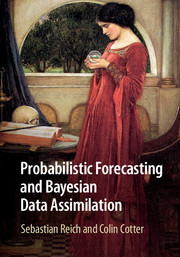5 - Bayesian inference
from Part I - Quantifying Uncertainty
Published online by Cambridge University Press: 05 May 2015
Summary
In this chapter, we define Bayesian inference, explain what it is used for and introduce some mathematical tools for applying it.
We are required to make inferences whenever we need to make a decision in light of incomplete information. Sometimes the information is incomplete because of partial measurements. For example, it can be difficult determine from a photograph whether the ball crossed the goal line in a football match because the information is incomplete: three-dimensional reality has been projected into a two-dimensional image, and in addition, the picture is only a snapshot in time and we cannot determine the speed and direction in which the ball is moving. The information is partial because we only see the situation from one angle, and at one moment in time. Also, sometimes the information is incomplete because of inaccurate measurements. In our example, this would occur if the photographic image was fuzzy, so we could not even determine exactly where the ball and the goal line are in the photograph. Incomplete information results in uncertainties which make decision-making difficult. However, often we have to make a decision anyway, despite the presence of uncertainty. In this situation, we have to combine the incomplete information with preconceived assumptions. We do this all the time in our daily lives, without even thinking about it; it is called “intuition”. Intuition can be surprisingly successful in some situations, for example we are somehow able to control cars at high speeds on motorways with relatively few accidents. However, in some other situations, intuition can fail miserably. To increase skill in decision making, in predicting the spread of tuberculosis in cattle for example, it is necessary to adopt a more rigorous approach.
When making an inference we have to decide how much to trust the incomplete information and how much to trust prior assumptions (assumptions based on previous experience before taking the measurement). If we take an uncertain measurement that does not match our previous experience, do we assume that the situation is changing and take notice of the measurement, or do we neglect the measurement, assuming that an error was made?
- Type
- Chapter
- Information
- Probabilistic Forecasting and Bayesian Data Assimilation , pp. 131 - 168Publisher: Cambridge University PressPrint publication year: 2015

